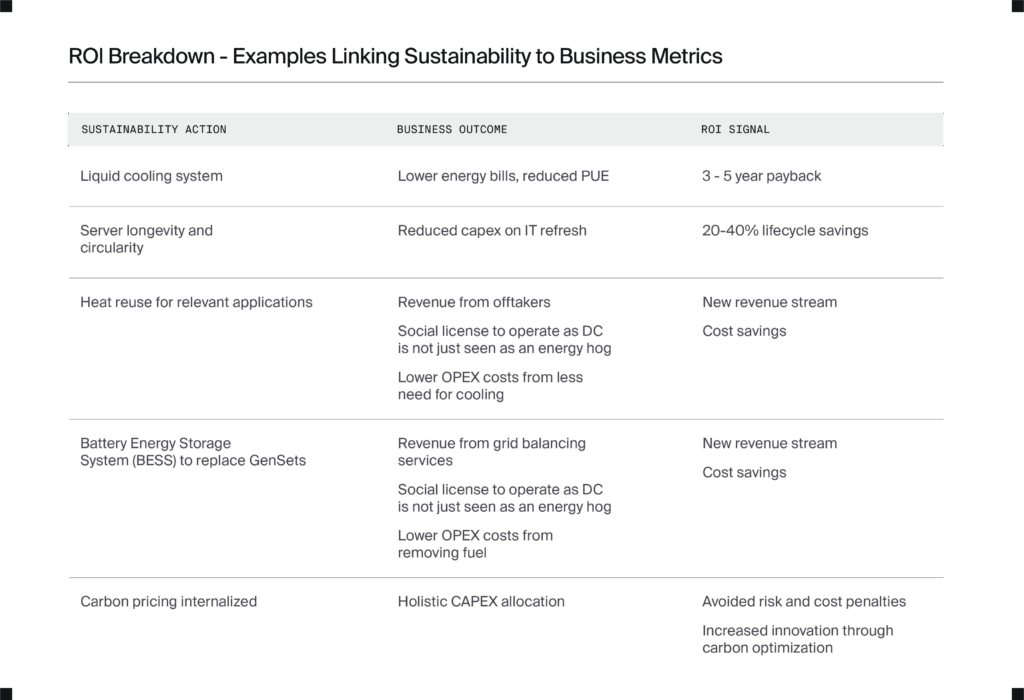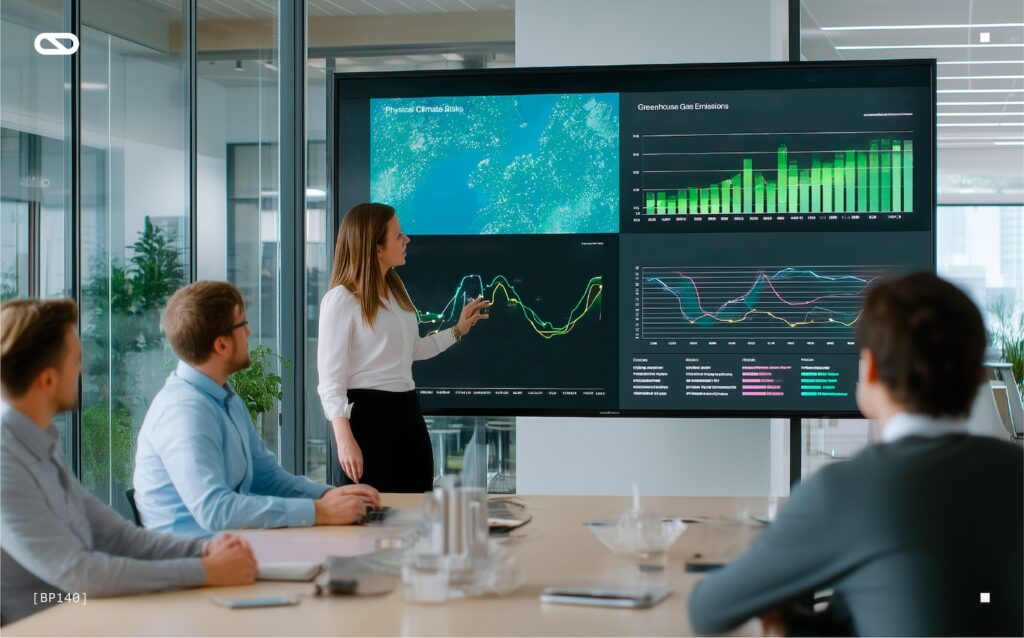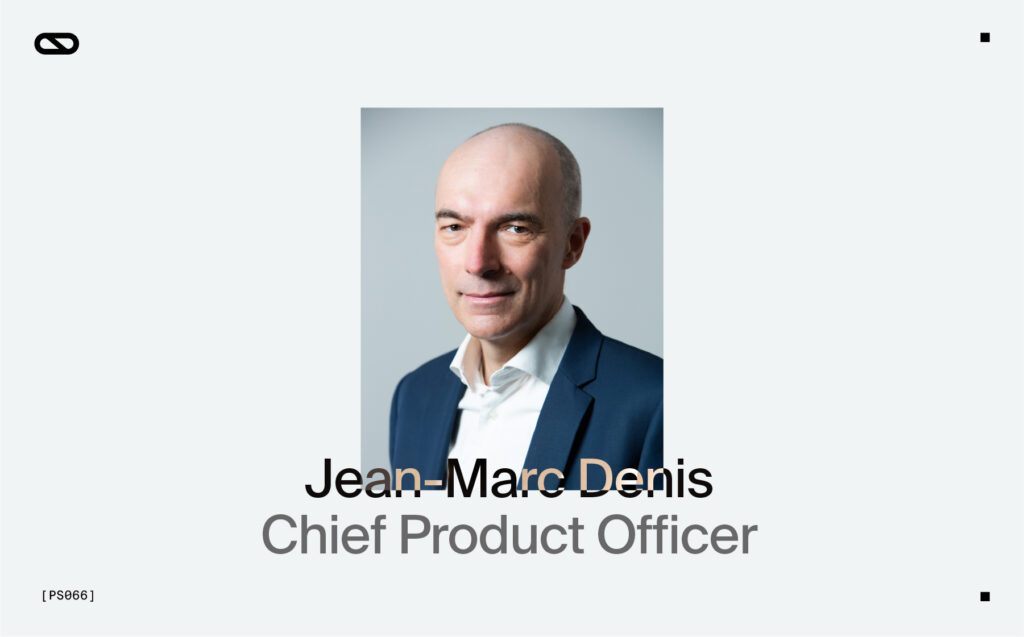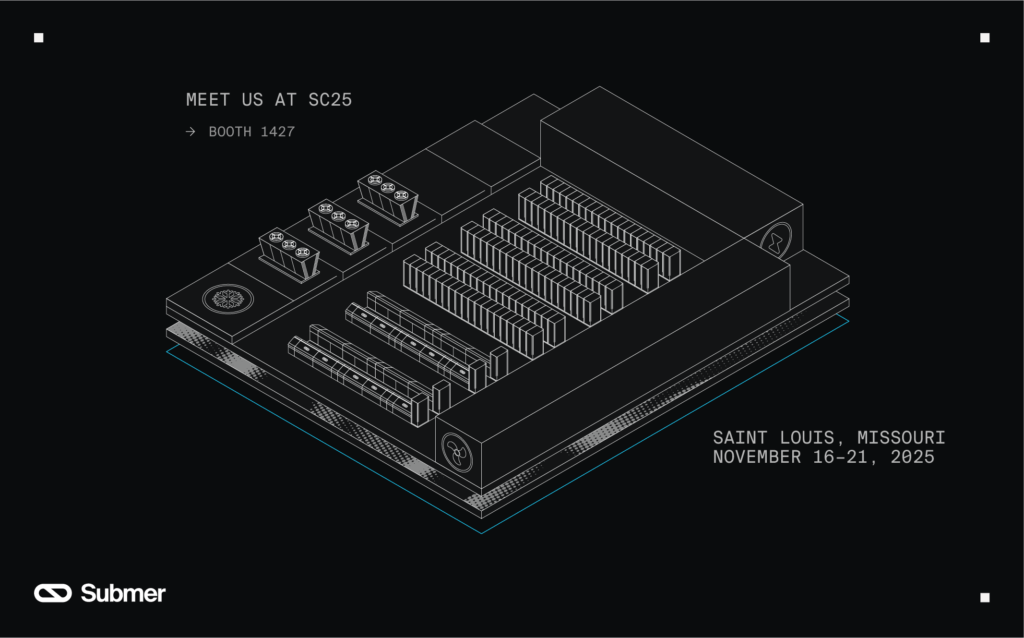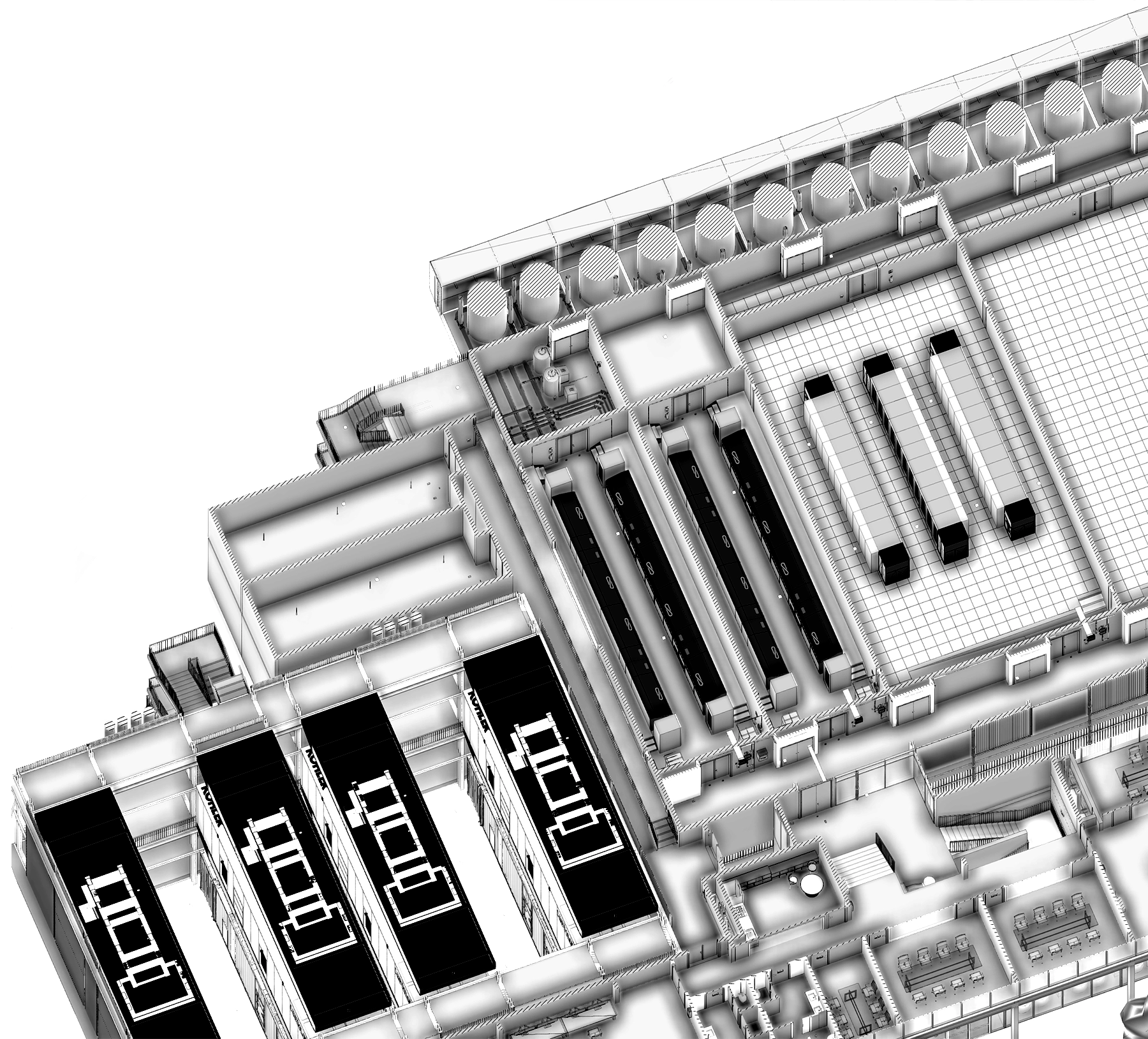The business world is facing a wide range of challenges and opportunities today. Climate change, AI, geopolitical risks, electrification of economies and more. It is a complex environment and it is impossible to move forward without looking at the bigger picture.
The terms to define ESG Strategy have evolved over the years: Corporate Social Responsibility, ESG, Sustainability… More recently, ESG as a concept has not delivered, and has no convincing replacement as of yet. There are several trends that could explain this failure. One of the key ones is that the main focus of organizations and governments in recent years has been centered on data collection and reporting. This has rarely translated into value creation and transformative change1.
Idealistic stakeholders around the world are trying to find the balance between maintaining and improving the standards of living around the world, as well as the medium and long term health of our societies and planet. Today, economies are still very much reliant on heavily polluting industries to provide jobs, create indirect growth and fill government coffers. Moving forward, the goal is to disentangle economic growth from pollution and human rights abuse, thereby lifting living standards for all, cleanly.
ESG strategy for datacenters: a core business framework
For datacenters, the opportunity couldn’t be better. As an industry with the potential to be low impact, it can be part of the solution if it successfully mitigates its areas of high impact. Too many datacenters treat sustainability as simple compliance…a check-the-box task to meet tender requirements or publish annual ESG reports. But this mindset misses the opportunity entirely.
In today’s context, seeing sustainability as cost is shortsighted. It can be a driver of value, resilience, and long-term business growth. This article explores how to move from compliance-driven sustainability to strategy-led transformation – tying environmental and social impact directly to operational excellence, customer expectations and financial ROI.
Evolving sustainability: from compliance to strategic value
Datacenters cannot expect to focus on every topic of Sustainability. Due to its complexity, if one were to follow the alphabet soup of global frameworks, the list of topics would be endless.
Step 1: Focus on what is relevant
To use sustainability jargon, one must focus on what is material, doubly so. Double materiality is defined as the most relevant topics for an organization from the inside out (impact) and the outside in (risk and opportunities).

Therefore, datacenters must be razor focused on where they are putting their efforts. The topics chosen will be at the crux of the highest impact the company is having on the outside world, and the most pressing risks and opportunities that affect the bottom line. It should also be noted that materiality is a moving target. It will evolve with time as impact is mitigated and new challenges surface.
Regarding impact today, this generally entails an increased focus on the impact during operations for the datacenter industry. Lifecycle assessments have shown that this is where datacenters consume the most energy and, in some cases, water2.
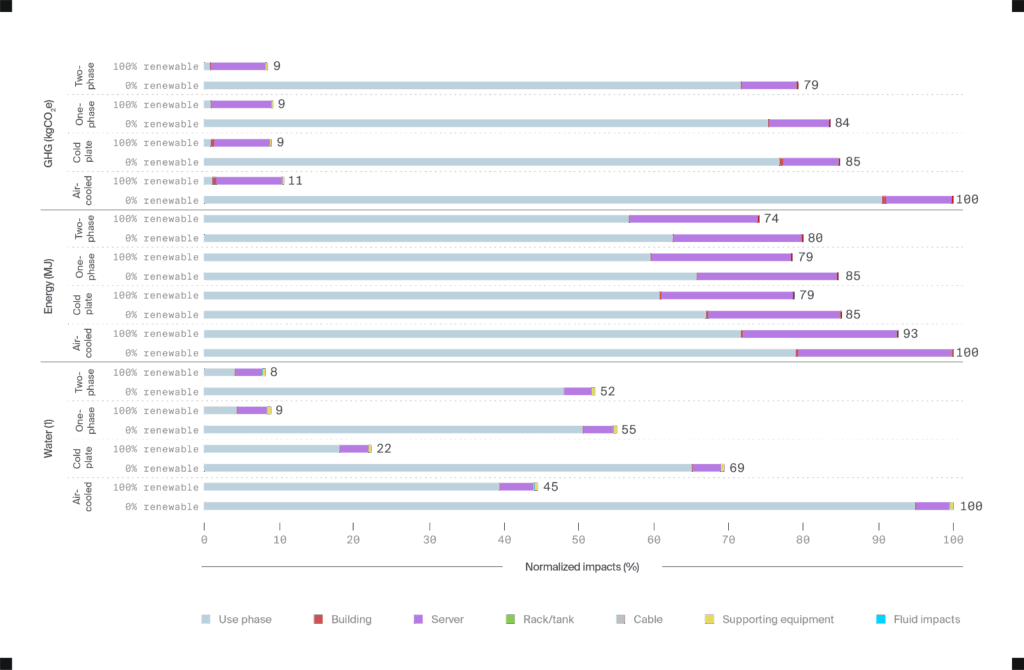
Chart compares types of cooling technology and their impact on water consumption, energy consumption and GHG emissions. Vast majority of impact is associated to the use phase of datacenters / Source: Nature, Microsoft
That being said, as datacenters reduce energy and water consumption and grids decarbonize, the construction and End of Life phases will grow in importance as their impact can be harder to mitigate.
Risks and opportunities are more complex and affect every aspect of the datacenter, from supply chains to consumer preferences. Datacenters are particularly vulnerable to physical climate risks in their complex supply chains. Transition risks are also material as end users become serious about meeting their climate goals and this gets baked into their deployment of energy-intensive AI. The list of ESG-related risks is increasingly long. Datacenter operators will recognize many, although not necessarily thinking of them through an ESG lens. These include talent attraction and retention, worker health and safety, access to power and water, social license to operate and community engagement, data and cyber security, and many more.
In all cases, the focus on impacts, risks and opportunities need to be fit for purpose and as closely linked to business outcomes as possible. This means identifying and prioritizing ESG issues not just for their ethical weight, but for their material influence on cost, resilience, market access and long-term growth. A “fit for purpose” approach ensures that sustainability strategies are tailored to the organization’s scale, operations and stakeholder expectations – not just imported frameworks or generic checklists. By aligning business models and sources of revenue to sustainability goals, the industry will ensure its perpetuity thereby minimizing pushback while reaping the economic benefits.
Tradeoffs do exist
If it were simple, everyone would be doing it.
True sustainable integration is not simply focusing on the good while ignoring the negative impacts. All business models carry impact, even the most sustainable ones that are beginning to crop up.
Sustainability and short term financial incentives can seem to contradict. For example, a server vendor looks to sell as many servers as possible, so it is incentivized to release new products as often as possible and establish protocols that recommend refreshes. Leasing business models are still few and far between. In a lot of ways, growth is still intrinsically linked with more resources and larger impacts.
It takes the true innovator to go against the grain to implement whole new ways of doing business. A lot of the hurdles encountered are social and economic, rather than technical. This requires collaboration with organizations that were previously considered competitors, it requires cross-industry alignment.
An easy example of this is the concept of heat reuse. In theory, datacenters are happy to provide heat for any kind of application. More often than not, other aspects take priority such as speed of deployment, which oftentimes fails to include heat reuse capabilities into the design. Land affordability often implies datacenters being located far from offtakers. As a result, even if a datacenter has the technical ability to reuse heat, there’s no one nearby who can take it, making implementation difficult or unviable. Moreover, still today, the vast majority of datacenters are air cooled and only capable of rejecting very low-grade heat (up to 30ºC), whose value is limited by its few use cases. Liquid cooling may prove to be a step change as its higher dissipation capacity can bring working temperatures up to 60ºC, opening the door to a wider variety of applications.
For these reasons and more, heat reuse remains a practice that has not scaled to its full potential. To make a difference, operators need to take a strategic approach, choosing location suitably, engaging with offtakers and local councils to build and operate heat reuse infrastructure. This will in turn affect the design of the datacenter itself as offset heat takes a load off cooling infrastructure but might not be in demand all year-round.
Core enablers of datacenter sustainability
Nothing about the datacenter industry is one size fits all, and the sustainability approach must adapt to each reality. Although it is unpractical to pinpoint a holistic framework to follow, we suggest the following critical pillars:
1. Governance & Organizational Integration
A sustainable datacenter strategy begins with strong governance. This means embedding sustainability into the very structure of decision-making. Ownership is assigned at the executive level, with board oversight to ensure long-term prioritization. Leading organizations embed ESG accountability across all core functions: Facilities, IT, Finance, Procurement, and Operations. Cross-functional working groups ensure alignment between strategy and execution, while individual departments are empowered with their own tailored sustainability mandates. Beyond structure, true integration includes building sustainability literacy and buy-in across the workforce. This helps teams understand their roles in reducing negative impact and uncovering sustainability-related innovations and opportunities.
2. Data, Systems & Insights
Robust, integrated data infrastructure is the foundation for any meaningful sustainability strategy. Datacenters must be able to measure and monitor their environmental impact: energy use, carbon emissions, water consumption, waste and supply chain inputs, in real-time and with precision. But data is not enough on its own; it must be structured to inform operational and strategic decisions. This includes forecasting models, digital twins and DCIM systems that can dynamically adjust workload scheduling, cooling methods, or power sourcing based on environmental impact. These systems should also support compliance and reporting obligations, such as the EU Taxonomy, EED, or voluntary standards like CDP and TCFD. Ultimately, leveraging these insights from these systems turns sustainability from a static reporting function into a responsive, adaptive capability. One that can inform trade-offs, highlight risk and enable continuous improvement at scale.
Submer uses the EU Taxonomy as a framework to define criteria for relevant activities. This involves measuring and analyzing both “the good” that our offering brings, captured by Substantial Contribution and “the bad” which is measured by the Do No Significant Harm (DNSH) and Principal Adverse Impact (PAI) laid out by the Taxonomy and Sustainable Finance Disclosure Regulation (SFDR).
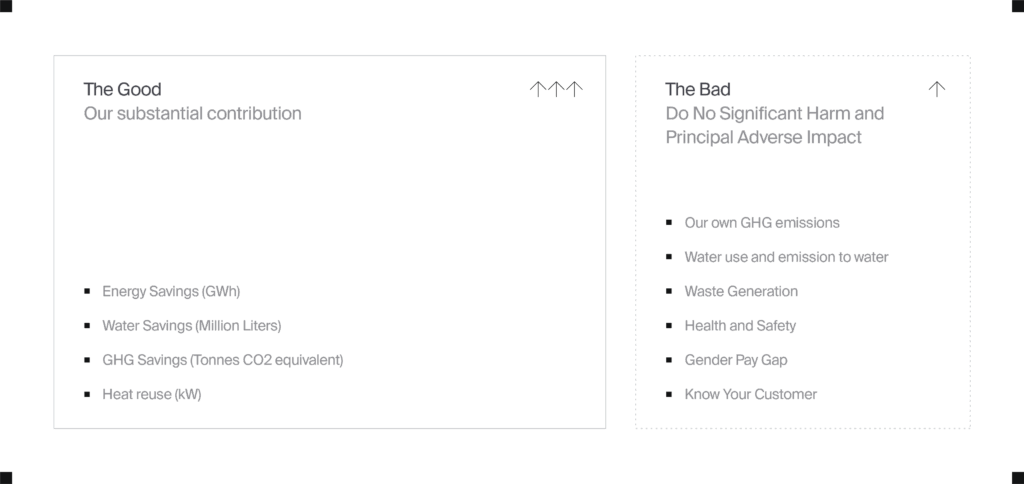
All these indicators are tracked throughout the year. They inform Submer’s decision-making process and the roadmap for new products and services.
3. Business Model & Financial Integration
True sustainability cannot be achieved unless it is aligned with the core economic logic of the business. This means rethinking the organizational business model in the short, medium and long term. Income and revenue streams should be tied to activities that work towards societal and environmental goals. The benefits of these products and services must be measurable in a relevant, transparent and understandable way.
Cloud and colocation providers must take a proactive role in measuring and disclosing relevant metrics, primarily related to energy intensity and related carbon emissions. In this fast evolving space, this need should go beyond current requirements in order to keep a lid on the impact of their operations. Offering transparency and integrating environmental data into their services can differentiate providers as trusted partners. This consultative and educational approach helps clients make informed decisions and meet their own environmental goals. Traditional CapEx- and OpEx-based decisions must evolve to include lifecycle impact, internal carbon pricing and full-cost accounting that incorporate environmental externalities. AI has the potential to become the new energy, meaning AI is becoming a fundamental, widely available force that drives innovation across all industries, much like energy fuels every aspect of modern life. It’s not the AI itself, but how it’s harnessed to power new solutions, products, and ways of thinking that makes it transformative. Therefore, with this commoditization, forward-thinking organizations must measure efficiency by cost per watt and work per watt. Then, they must measure the impact on environmental indicators such as emissions per workload or water intensity in high-water stress regions.
4. Resilience & Adaptive Strategy
In a time of environmental volatility, political polarization and fast-paced innovation, resilience is emerging as a strategic imperative. Sustainable datacenter strategies must account for current performance and long-term adaptability. This includes designing infrastructure with modularity, upgradability and flexibility to respond to shocks; be it resource scarcity, extreme weather, regulatory shifts, or stakeholder backlash. Moreover, sustainability strategies must remain agile to evolve alongside technological innovation, public sentiment, and policy development. Active engagement with stakeholders is essential in order to de-risk operations, build legitimacy and foster co-created value.
5. Stakeholder Collaboration
Building on the last point – strong partnerships with complementary technology providers, governments, utilities, grid operators, suppliers, academia, and even competitors are essential. Many of the systemic challenges that datacenters are facing are systemic and require a collective approach. The Uptime Institute’s latest Annual Survey highlights the top areas of concern:
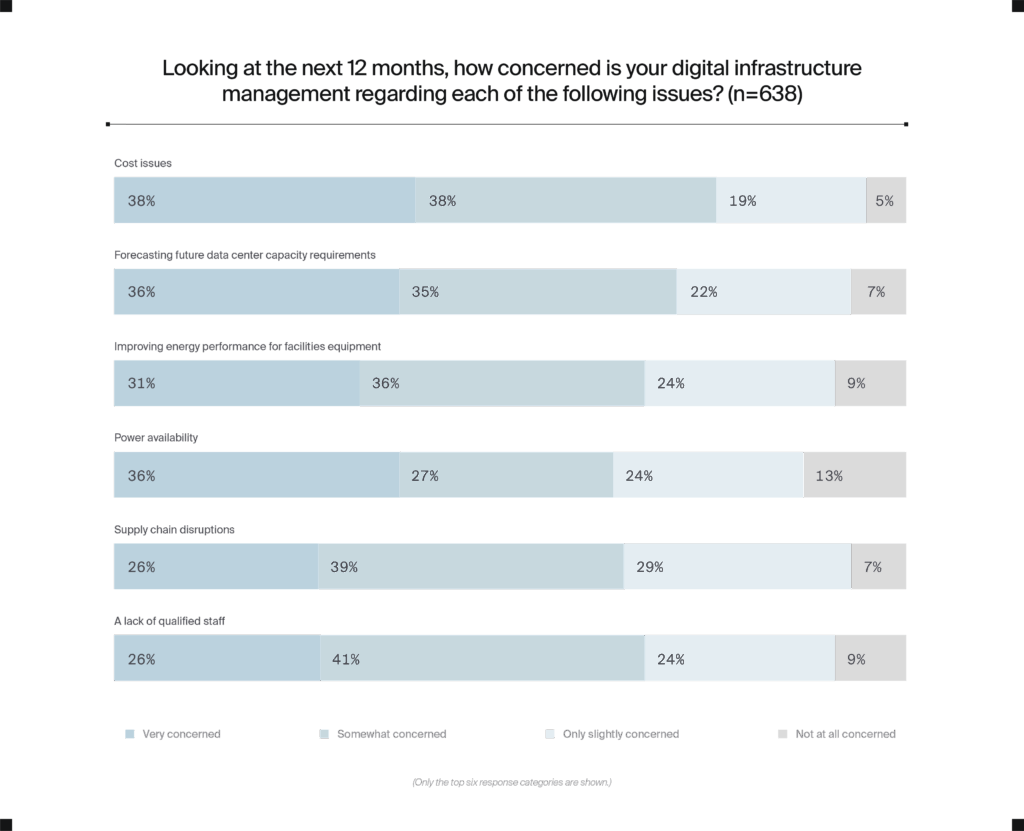
No datacenter operator can tackle these alone as most challenges remain out of their control.
Together, these are some key elements that signal maturity, foresight and a willingness to lead. Rather than a reactionary approach, forward-thinking operators use these Governance practices to shape the global sustainability agenda by influencing regulation, earning trust and building a long-term license to operate.
Conclusion: From cost center to core strategy
Sustainability done right builds stronger, more resilient companies. It enhances operational performance, strengthens brand equity, mitigates risk and opens new pathways to revenue. When ESG is treated as a side project, it becomes a sunk cost. When embedded into the heart of strategy, it’s a competitive advantage.
The data economy is only growing, and datacenters are the infrastructure powering it. The question is whether they’ll do so in a way that’s fit for the future. At Submer, we see this as a pivotal moment to embed sustainability deeply into how digital infrastructure is built and operated.
Those who embrace sustainability as a strategy will shape markets, attract the next generation of talent, and future-proof their operations. It’s time to lead, not lag.
